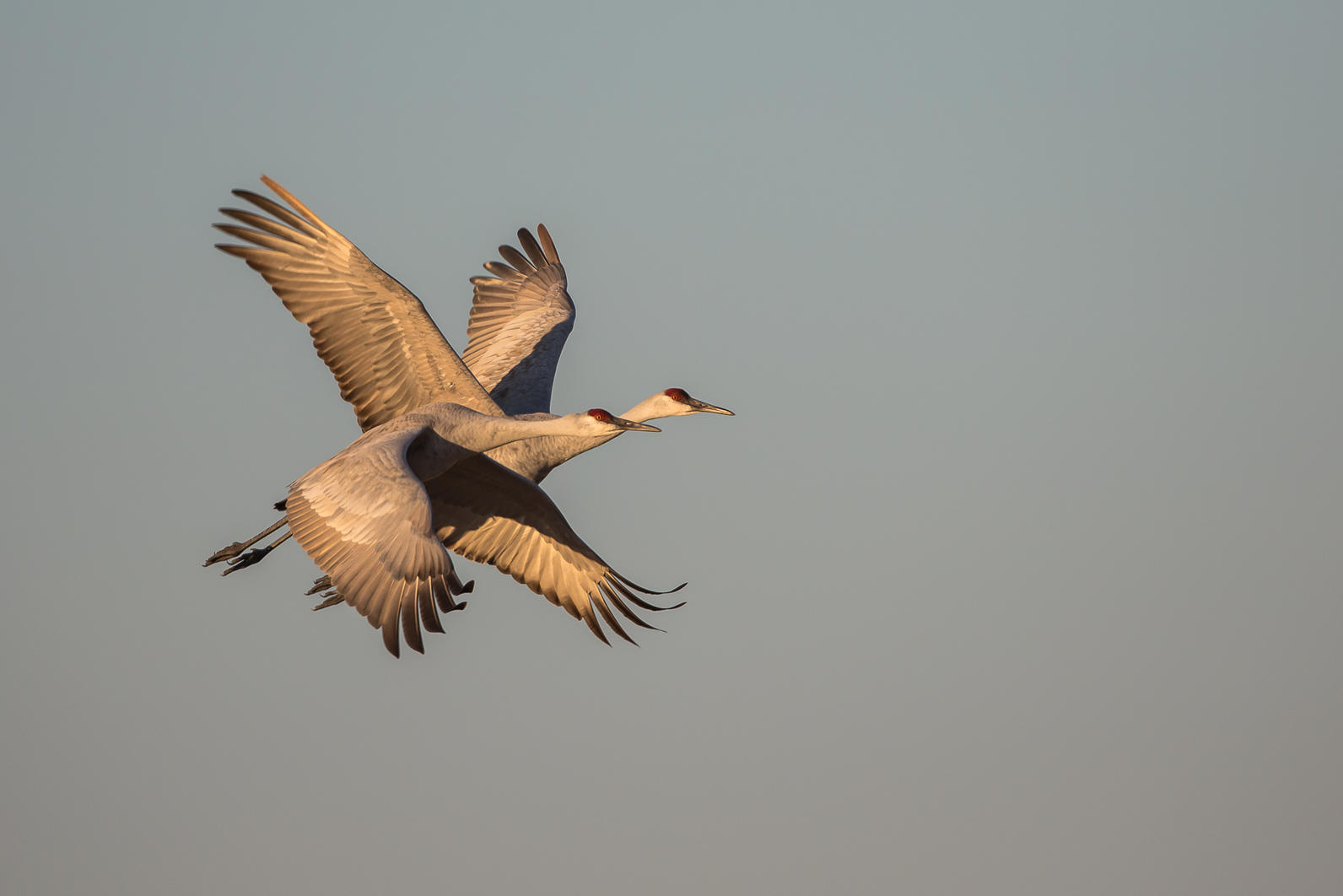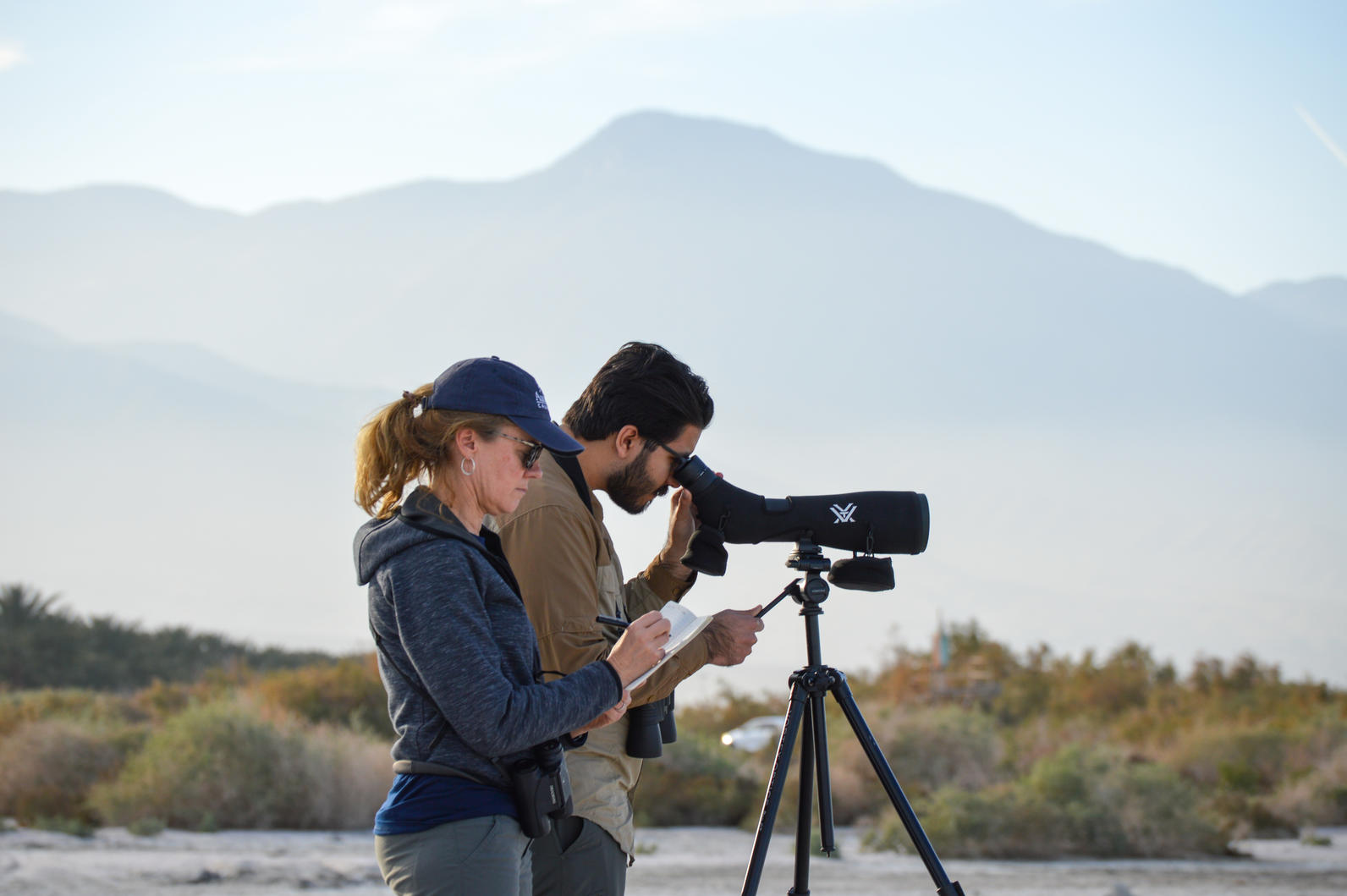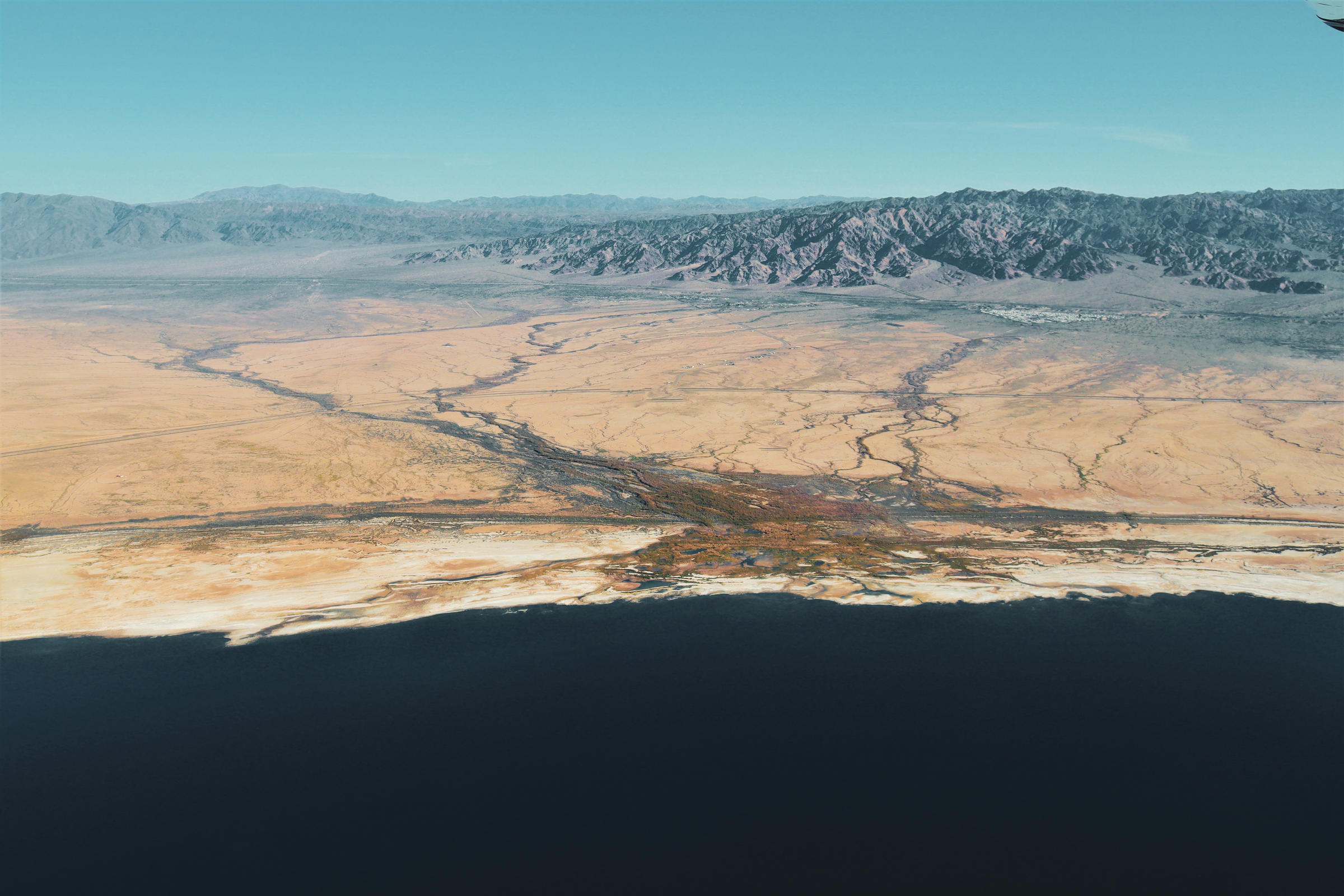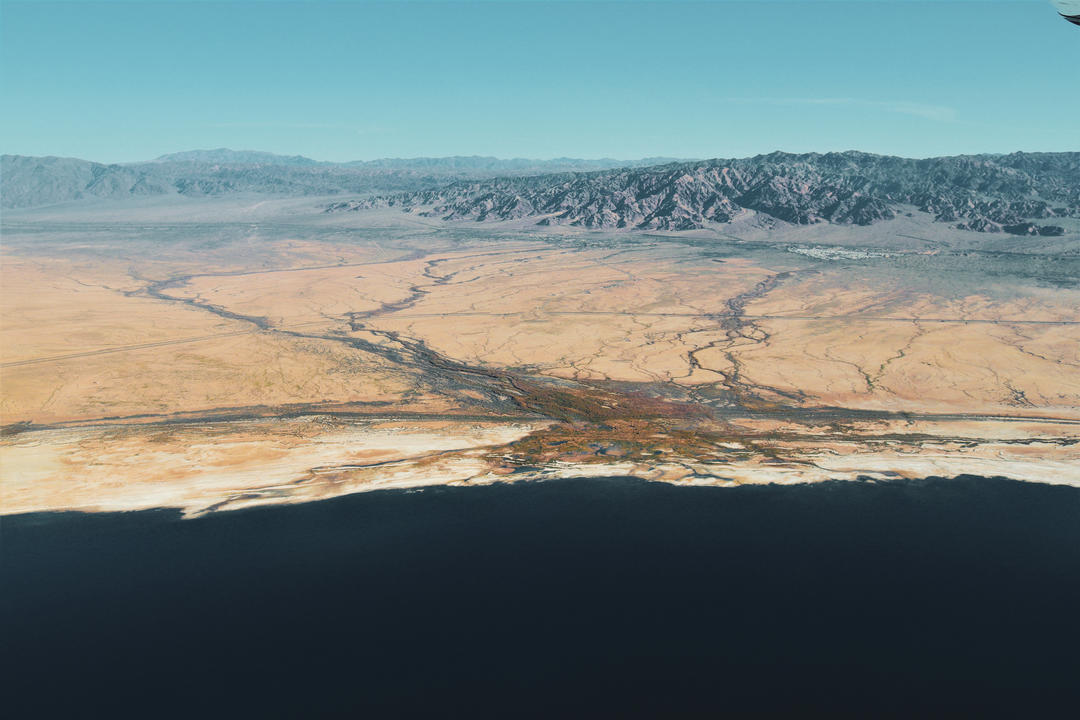In December 2019, the LA Times published an article titled “Amid the wasteland of the Salton Sea, a miraculous but challenging oasis is born” about the unexpected wetlands that have emerged along the exposed shoreline, as the Salton Sea shrinks.
Armed with the information that these wetlands now cover thousands of acres and are filled with birds, I recently had the opportunity to tour some of these sites and also view them from a plane. Along the southwest shore, we walked across crunchy, salty playa observing signs of where the Sea just recently occurred. In the distance, I could see a line of greenery coming into focus. A Sandhill Crane flew in front of us, followed by another one – surely a sign that a wetland must be nearby.

I then heard the clatter of a Marsh Wren – or wait - was it 20 Marsh Wrens? Indeed we were approaching a vast reed-filled wetland, filled with bird song. Scanning along the wetland towards the sea edge, the wetland transitioned to playa covered in shallow water. Numerous species of shorebirds scurried along the water’s edge, picking off brine-tolerant insects. And just offshore, the hindquarters of Northern Pintail ducks were apparent in large numbers, their heads buried below the water’s surface in mud, filtering for invertebrates. This is an oasis. This is why Audubon’s bird surveys are still showing strong numbers of shorebirds and ducks, despite a shrinking Sea.
Scanning north, we saw another wetland! Instead of exposed salty dust emissive playa, where the agricultural drains formerly flowed directly into the sea, this drain water is now spreading out across the playa, creating these wetlands. These wetlands are providing us with new habitat as it is being lost and at the same time they are also functioning to reduce emissive dust that could otherwise blow off the playa. Nature is helping us. It’s time for us now to help Nature.
Audubon, U.S. Fish and Wildlife Service, and Oasis Bird Observatory have identified new wetlands formed by drainage inflows along the southern and northern ends of the Sea where bird concentrations and diversity are very high. In fact, Oasis Bird Observatory states that their weekly surveys suggest ±22km of shoreline and inshore habitats in the northern Sea are enriched by inflows. These habitats sustain the highest concentration of birds foraging and lofting compared to shorelines absent of inflows (B. McKernan, pers. Comm). Audubon maintains 14 bird monitoring sites across the Salton Sea. While not all of these vegetated wetlands have been monitored, we are seeing high species diversity in these areas, including shorebirds, wetland and wading birds, and dabbling ducks concentrating at these sites in high numbers.

Audubon recently analyzed satellite imagery from January 2020 and quantified 6,700 acres of vegetation on the exposed playa. Drainage into the Sea is likely the major driver of these pockets of vegetation. Types of drainage vary across the Sea and include ephemeral washes and streams, perennial streams and rivers as well as irrigation drainage. The dominant drainage in the northern, southeastern and southwestern portions of the Sea is irrigation drainage. These as well as the agriculture driving them will likely persist and could provide reliable water to maintain these newly emergent vegetation areas with low effort maintenance. These results can inform lower effort and cost habitat restoration and dust suppression project siting where irrigated vegetation is already evident.
While these wetlands are not without their challenges, ranging from water quality and water flow to management of endangered species such as desert pupfish and Yuma Ridgway’s rails, there is a new opportunity before us. The State of California, as it builds its promised wetland and dust control projects on the exposed playa at the Salton Sea as required under the Salton Sea Management Plan, should further investigate these wetlands, incorporating them into the Salton Sea Management Plan, instead of only creating habitats from scratch, which are both costly and time consuming. In fact, in some areas the wetlands have emerged on the sites of future projects so they will need to be addressed. An unexpected opportunity has presented itself – it’s time to manage these wetlands and not let them dry up so that they can continue to their functions – providing habitat and controlling dust.









